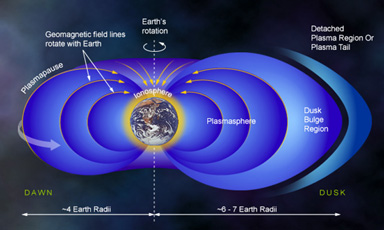This image is a summary of the main features of the plasmasphere: the plasmapause, main body of the plasmasphere, dusk-bulge region and detached plasma regions outside the main body of the plasmasphere
Click on image for full size
The Earth's Plasmasphere
The plasmasphere is a torus-shaped region within the Earth's magnetosphere. The Earth's plasmasphere is made of just that -
plasma. It has a very sharp edge called the plasmapause at equatorial distances of 4-6 Earth radii. The plasmapause, where densities drop by a factor of 10-100 in a relatively short distance, was discovered in 1963.
The plasmasphere is essentially an extension of the ionosphere to high altitudes. Inside of the plasmapause, geomagnetic field lines rotate with the Earth. Plasma, flowing up from the ionosphere, is trapped on these corotating field lines and builds up to high densities. Outside the plasmapause, magnetic field lines are unable to corotate because they are influenced strongly by electric fields of solar wind origin. They convect to the magnetopause boundary on the day side of the Earth, sweeping the ionospheric plasma out of the magnetosphere and forming the sharp plasmasphere boundary. The plasmasphere bulges out to greater distances on the dusk side of the Earth.
The plasmasphere is composed mostly of hydrogen ions. The plasma density ranges from 104 cm-3 just above the topside ionosphere to 102 cm-3 within and 10 cm-3 just exterior to the plasmapause. The base of the plasmasphere is taken as the altitude (~ 1000 kilometers) at which protons replace oxygen as the dominant species in the ionospheric plasma. The ion temperature in the plasmasphere is generally between 0.5 eV and several eV (1 eV = 11,700 K).
You might also be interested in:
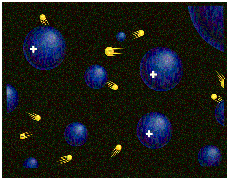
Plasma is known as the fourth state of matter (the first three states being solid, liquid and gas).Matter in ordinary conditions on Earth has electrons that orbit around the atomic nucleus. The electrons
...more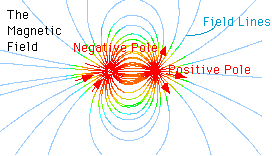
The force of magnetism causes material to point along the direction the magnetic force points. This property implies that the force of magnetism has a direction. As shown in the diagram to the left, the
...more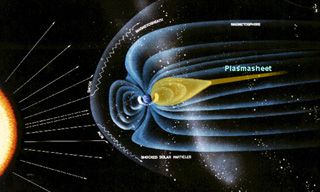
The plasma sheet is simply that, a sheet of plasma that extends down the magnetotail dividing the two lobes of the Earth's magnetic field. The particle density here is about 0.5 cm-3 for both electrons
...more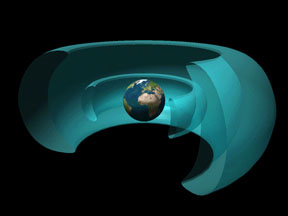
The Earth's radiation belts are one component of the larger and more complex system called the magnetosphere. The radiation belts of the Earth are made up of energetic, electrically charged particles or
...more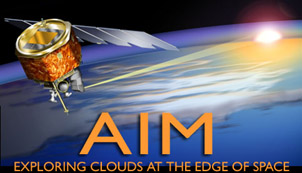
Television weather forecasts in the space age routinely feature satellite views of cloud cover. Cameras and other instruments on spacecraft provide many types of valuable data about Earth's atmosphere
...more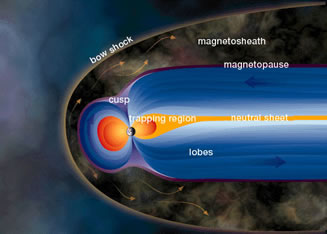
A magnetosphere has many parts, such as the bow shock, magnetosheath, magnetotail, plasmasheet, lobes, plasmasphere, radiation belts and many electric currents. It is composed of charged particles and
...more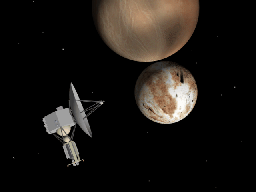
AU stands for Astronomical Units. Distances in space are too large to measure in Earth standards like miles or kilometers. For distances too large to measue in AU, we use light years. A light year is the
...more


